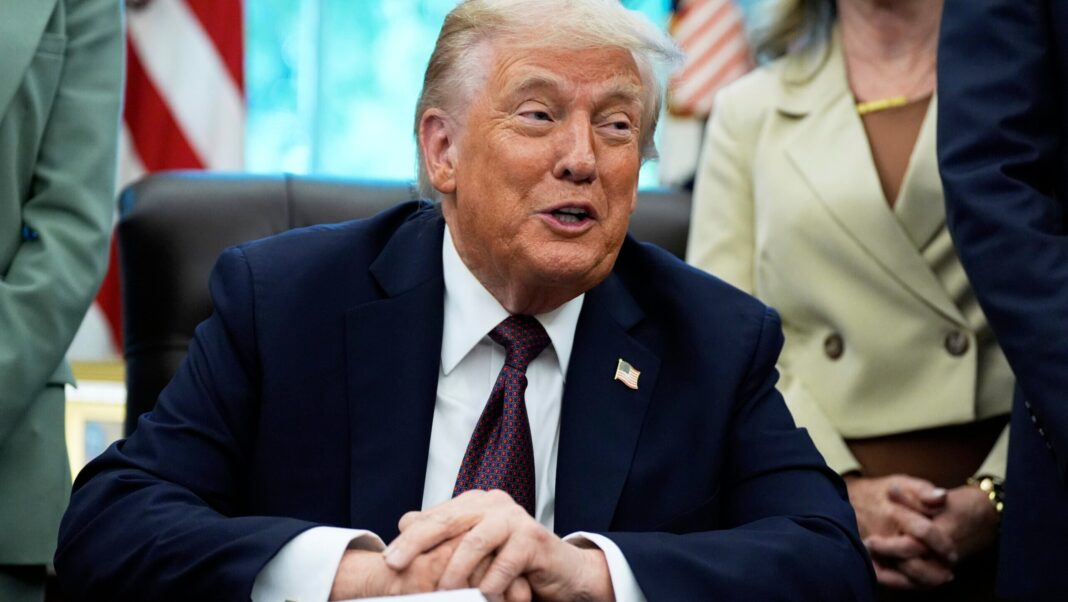Trump’s $15 Billion Defamation Lawsuit Against The New York Times
On Monday, President Donald Trump filed a staggering $15 billion defamation lawsuit against The New York Times and four of its journalists, as detailed in recent court documents. This legal action underscores the heightened tensions between Trump and media outlets that have scrutinized his presidency and personal dealings, particularly as the nation gears up for the 2024 election.
Core Allegations of Defamation
The lawsuit, lodged in U.S. District Court in Florida, accuses the influential newspaper of perpetuating a “decades-long pattern” of intentional and malicious defamation against Trump. Specifically, it targets various articles and one book authored by two of the Times’ journalists, asserting that these works are part of a broader campaign to undermine his reputation.
In the court documents, Trump contends that the defendants published statements that were either negligent, knowingly false, or made with reckless disregard for their accuracy. Such assertions point to the serious nature of the allegations, indicating that Trump believes the Times’ coverage not only misrepresents the truth but also actively seeks to damage his public image.
The Media’s Role in Trump’s Narrative
Trump’s lawsuit reflects a long-standing conflict between the former president and mainstream media, which he frequently accuses of bias and misinformation. In a post on his social media platform, Truth Social, Trump lambasted The New York Times, claiming it has transformed into a “virtual ‘mouthpiece’ for the Radical Left Democrat Party.” This characterization suggests that Trump views the newspaper not just as a journalistic entity, but as a political adversary bent on undermining his achievements and GOP values.
Prior Legal Actions Against Other Media Outlets
This isn’t the first time Trump has escalated tensions with media organizations through legal means. In July, he filed a $10 billion defamation lawsuit against The Wall Street Journal and media mogul Rupert Murdoch, prompted by an article discussing his connections with the late financier Jeffrey Epstein. This pattern of litigation highlights a broader strategy employed by Trump to combat what he perceives as unfair press coverage.
The New York Times’ Response
As of early Tuesday morning, The New York Times had not provided a comment on the lawsuit. The lack of an immediate response may reflect a strategic choice, possibly to consult legal counsel before addressing the media’s perspective on the allegations. As a major news organization, how it navigates this lawsuit could influence public perception and could set precedent for similar cases in the future.
The Bigger Picture: Media and Politics
This ongoing clash between Trump and media outlets raises crucial questions about the relationship between politics and journalism. As the 2024 election approaches, the scrutiny of political figures intensifies, and the media often finds itself in the crosshairs of defamation claims, particularly from powerful individuals. The outcomes of such lawsuits can impact journalistic integrity and freedom, sparking debates around press protections versus the reputational rights of public figures.
The Broader Implications
The implications of Trump’s lawsuit extend beyond just his personal grievances. They touch on fundamental issues of press freedom, accountability, and the intersection of media and political narratives. As Trump continues to assert his influence within the Republican Party, the way in which he addresses media criticisms and litigation may resonate with his supporters and shape the broader political discourse in the United States.
In navigating this legal battle, both Trump and The New York Times are emblematic of a moment in American history where the lines between information, misinformation, and public sentiment are increasingly blurred, echoing the complexities of truth in the modern media landscape.



